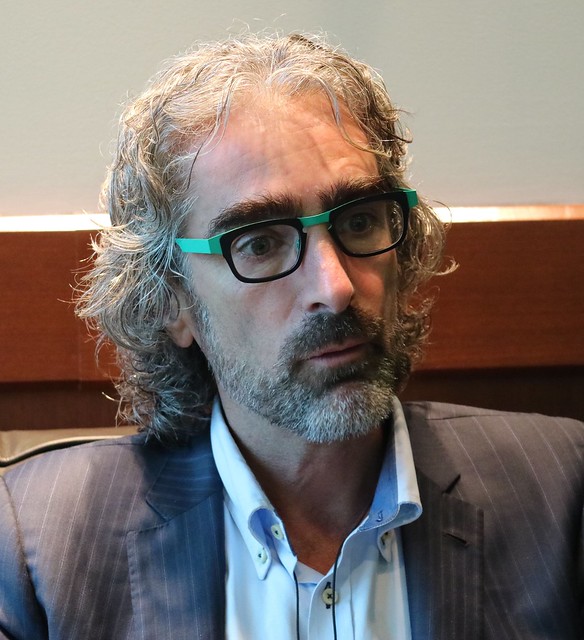When we first met Tom Rand three years ago, he was bullish about the clean tech market that he expects to reach $3-4 trillion by 2020. Rand is a consultant with MaRS Cleantech and he operates the $50 million ArcTern Venture fund, formerly the MaRS Cleantech Fund. The name may have changed but their gig remains the same, “early-stage cleantech investing.”
Rand is an entrepreneur, investor and the author of numerous books. His motto is simple.
“In a market economy if you solve a big problem you get a big reward,” says Rand. “That’s how it works. In the 21st century, the single most significant problem we face is climate change. So clean tech solutions that reduce carbon emissions and provide alternatives to fossil fuels are facing the single largest global market of the 21st century.”
We asked Rand how the cleantech sector is doing in Canada today. “From a traditional perspective where organic growth would do fine, we’re doing well. But from the perspective of scale, which is really the problem that the clean tech sector needs to solve if it’s going be relevant on the carbon side, we’re way behind.”
Scale is what it will take to tap deeply into that emerging multi trillion dollar market and to solve climate change.
“You are now seeing more and more actors from non-cleantech places, traditional financial actors, oil and gas folks, beginning to get interested in cleantech,” says Rand.
Rand says governments haven’t been able to figure out how to strategically support taking this industry to scale.
However, Rand sees a glimmers of hope on the horizon: “So, we now have a federal government that not only understands the urgency of the problem, but are open to engaging in good faith about asking the question, ‘how is it that we accelerate candidates participation in this market’?” says Rand.
He also says Alberta has gone from laggard to leader “I know they are targeting 30 per cent renewables by 2030 which I think is a significant target. To me, that’s a more meaningful target than the cap on the oil sands,” says Rand.
For his part Rand has grown the original $30 million MaRS Cleantech Fund: In ArcTern Ventures “We’ve deployed about 50 million to date across 10 companies in our portfolio. Some of our companies are beginning to take off, and we’ve sort of doubled-down on some of those companies. And now, we’re in the process of raising a fund that’ll be somewhere in the order of 150 million. More capital but doing the same thing.”
Hydrostor
One of the company’s Rand supports is Hydrostor, a Toronto-based company, working on the holy grail of green energy: energy storage.
Their system is deceptively simple. When there is an excess of cheap energy, a compressor pushes air into a series of underwater balloons. This stores energy as hydrostatic pressure. Then, when there is a need for power, the flow is reversed, pressure pushes the stored air through a turbine, which produces electricity.
Just this year, HydroStor completed a demonstration plant on Toronto Island. And most recently, they announced a partnership with international engineering firm AECOM to “jointly develop, market, propose and construct” projects using HydroStor’s adiabetic compressed air energy storage technology.
Morgan Solar
We profiled Morgan Solar three years ago. Rand says “They’ve figured out how to concentrate solar at very low cost. So instead of a lens, they have an optic. So ultimately, they have a small amount of silicon and a large amount of glass which lowers the cost, and they have a very competitive tracker which allows their panels to track the sun.”
A Toronto-based company, they are establishing a global presence with large projects closer to home in Alberta and in far-off Kuwait.
As part of maturing as a company “Morgan Solar has a brand new CEO, Mike Andrade,” says Rand. “Mike used to be the number two at Celestica. So you’re seeing senior executives from traditional industries now looking at this sector and being able to provide the expertise and oversight and experience that is required to build global companies.”
A few more
Rand also invested in Woodland Biofuels, but for it to move to the next level the company needs to build a $250 million ethanol plant. It may take a conventional energy giant to make this happen. While recently in Calgary, Rand was certainly dropping hints.
ArcTern has also invested in Circuit Meter, a startup that installs very low cost technology to keep real-time track of energy use in buildings. This allows easy comparisons between equipment to find out if human behaviour is your energy culprit. The savings that can some from such tools can be surprisingly significant.
Climate Capitalism
Rand is working on a new book, which is currently being written under the working title “Climate Capitalism.”
“It’s a response to Naomi Klein, says Rand. While [she] has the problem well identified in terms of climate and energy systems, it’s utterly naive to think that we’re going to solve this problem without focusing on market forces and without figuring out ways to get the energy incumbents and the trillions of dollars of capital sloshing around in money markets to work.”
“The neo-con version of capitalism that has emerged since the Chicago School is only one version of capitalism. Sweden is a capitalist country. One could even argue that China is emerging into a capitalist economy. Capitalism comes in as many flavors as you have food in the world,” says Rand.
“Neo-cons, have defined their response to climate as, ‘get your hands off my market,’ which is why Naomi Klein has a point. But we will not solve this problem without market forces. We will not solve this problem without capital markets. So we need to think about what climate capitalism looks like.”






